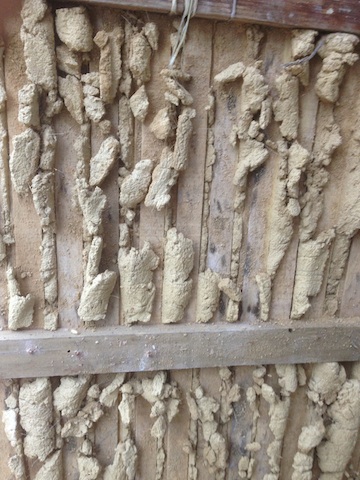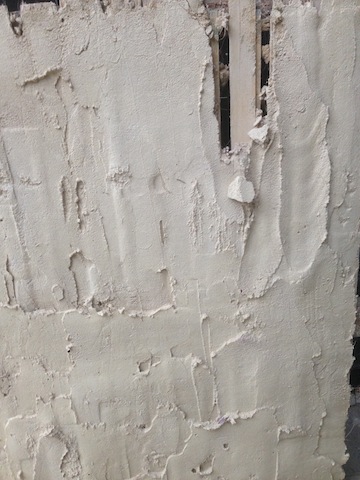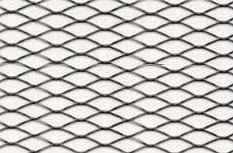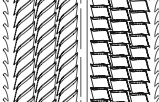Plastering Wood
|
Plastering wood is possible but you need to prepare it properly first.
Plaster will not properly adhere to wood on it's own – so a physical key is needed. You first need to fix either metal lathing or wooden laths to the timber.
Unless you have to, or want to stick to traditional methods, Expanded Metal lathing (EML) is generally the easiest option to use. Traditional Lath & Plaster Plaster doesn't stick to traditional wooden laths sufficiently well – a physical key is needed. This key is provided by the plaster being pushed through the gaps in the laths to effectively hook onto the strips of wooden lath and when dries partially shrinks and hardens around the wooden laths. Wall plates and timbers Traditionally a key would be provided by chopping the timber to increase the surface area and make the surface as rough as possible to ensure the plaster grips. Yet this process is not always that reliable so if you need to plaster wood - metal lathing can be used. |
 The back side showing plaster pushed through The back side showing plaster pushed through The underside showing the first coat of plaster with hair to help bridge the gaps between laths The underside showing the first coat of plaster with hair to help bridge the gaps between laths |
Plastering Wood using metal
The Easiest Way to Plaster over timber
|
Using Expanded Metal Lathing (EML) Sizes Comes in a variety of sizes - in sheet form 2500mm x 700, or in rolls with varying from 50mm wide to over 200mm. |
 Expanded Metal Lathing Expanded Metal Lathing |
Fixing
The EML is providing a key for the plaster to adhere to and so needs to be adequately fixed to the timber with galvanised nails, screws or staples.
Overlap
If plastering over wall plates or wooden timbers built into the wall then ensure the EML is sufficiently wide to slightly overlap onto the masonry to reduce the risk of any cracks developing.
|
Different types of Expanded Metal Lathing Expanded Metal Lathing Rib Lath Hy-Rib |
 HY-Rib HY-Rib |
Galvanised Expanded metal lathing is widely available and suitable for most internal work - plastering over wood and studwork walls. Only if there are long spans between supports does Hy-Rib need to be considered.
Stainless steel EML is available for external exposed conditions, however for external work with moderate exposure Red Rib galvanised EML can be used. Further details at:
Using hair when plastering wood
The use of hair will help strengthen the plaster and prevent too much plaster being pushed through any gaps and breaking off.
Hair can be added as you are mixing or directly on your hawk prior to spreading. Ensure as even a distribution as possible,
Return from Plastering Wood to Index
All rights reserved. No part of this online plastering guide may be reproduced, stored in a retrieval system, or transmitted in any form or by any means, electronic, mechanical, photocopying, recording or otherwise without the prior permission of the author. Copyright © Paul Harper DIY Plastering 2015
The author cannot accept liability for
the use of any of the materials or methods recommended in this manual or
for any consequences arising out of their use. The author cannot
guarantee the suitability of any recommendations made in this manual and
shall not be under any legal liability of any kind in respect of or
arising out of the content of this guide.